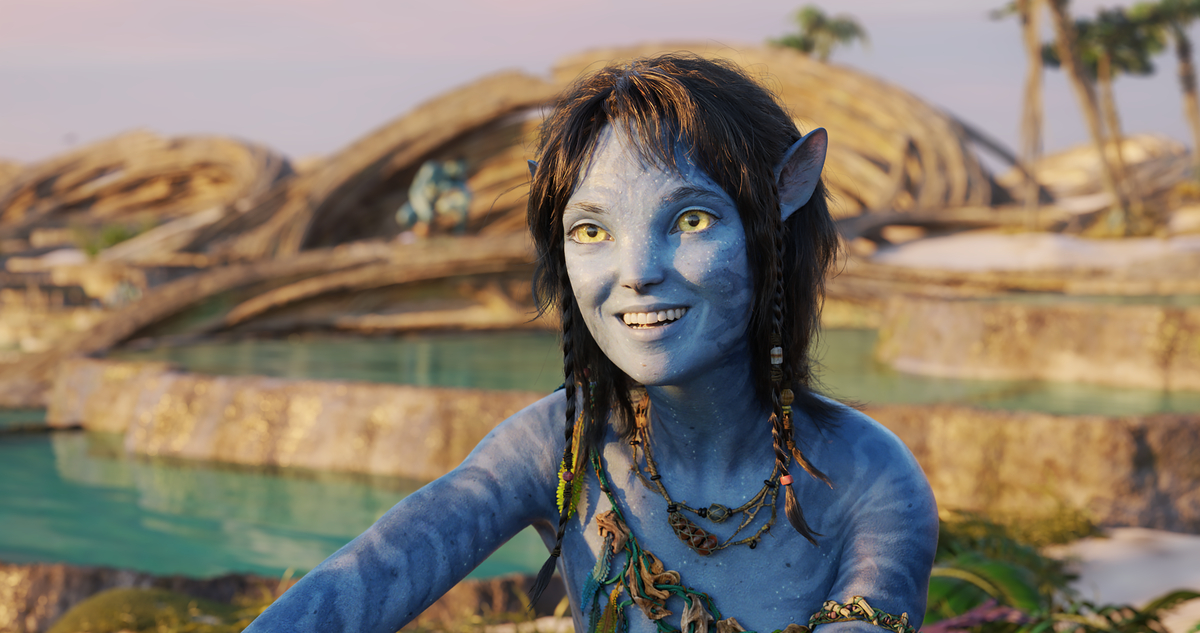REVIEW: ‘Avatar: The Way of Water’ Should Spark Concern For The Battles Raging Here on Earth
3/5 Spirit Trees

If you love intricately rendered spectacle, director James Cameron’s Avatar: The Way of Water has plenty of it—and the story almost manages to catch up with the visuals.
At the end of the first Avatar movie, the Na’vi, the Indigenous people of the planet Pandora, drove humans off the planet, except for a few defectors who chose to stay behind. Jake Sully (Sam Worthington), his consciousness permanently transferred into his avatar, is happily living with Neytiri (Zoe Saldaña) and their four kids. He’s also the leader of the Omatikaya forest people, despite not being Indigenous himself—a blatant white savior trope that carries over from the first film.
The family’s peaceful existence falls apart, though, when the humans return. Earth is no longer habitable, and humanity now plans to colonize Pandora completely and make it their new home. They announce their arrival by gleefully destroying vast swaths of forest (I wonder how Earth became uninhabitable?), and then slaughtering a race of highly intelligent whale-like beings to harvest the ambergris-like substance in their brains.
Among the humans is Colonel Miles Quaritch (Stephen Lang), brought back from the dead by having his memories implanted in a new kind of avatar called a recombinant. When Quaritch comes for Jake’s family, they flee their home and go to live with the Metkayina, a clan of Na’vi who have evolved to live partly in the ocean. There, they try to learn the Metkayina’s ways, but find it hard to fit in.
Related: How Long Did It Take to Make Avatar 2: The Way of Water? on The Escapist
You might have heard that the movie is three hours long, and it doesn’t quite justify its length. The story manages to feel both thin and cluttered, and the plot ends up not making a lot of sense. Why does Jake think that merely hopping over to another village will protect him? Why is he so surprised when Miles starts laying waste to Pandora to find him? Wait, why is Miles so hellbent on hunting him down, again? Doesn’t he have an entire planet to destroy?
But there’s also plenty to like in the sequel. The most interesting story is that of Kiri (Sigourney Weaver), the teenage daughter of Dr. Grace Augustine (also Weaver), who died in the first film. Kiri has a series of ecstatic religious experiences and struggles to understand and connect to the planetary superconsciousness the Na’vi revere as a goddess. The story hints that there may be something sinister at the heart of her connection, and her journey is intriguing to watch.
Saldaña is wonderful as Neytiri, infusing the character with enough emotion and complexity that you forget you’re watching a CG-created alien. You feel it viscerally when Neytiri rages and mourns for the destruction and loss of life ravaging her home.
Where the story really shines is in its exploration of boundaries, and the way those boundaries blur and shift. Jake and Neytiri’s kids are taunted for their extra fingers, which belie their human(ish) ancestry. Spider (Jack Champion), a human boy growing up on Pandora, struggles to figure out where he belongs. And the more time Miles spends in his avatar, the more he comes to rely on Na’vi ways of life.
As for the visuals that have been getting so much buzz—yep, they’re amazing. I’m saddened, though, by the fact that American audiences are so easily wowed by CG forests and oceans, yet so apathetic about the real ecosystems that are being destroyed by real capitalist interests. If you care about the Omatikaya’s forest or the Metkayina’s reef, do you also care about the vanishing Amazon Rainforest and the Australian Great Barrier Reef? If not, why not?
The environmental story this movie tells is based on alarm bells going off all over our own planet. While you wait for the third Avatar film to come out, consider listening to the real Indigenous people who are at the forefront of these battles happening right here on Earth.
(featured image: 20th Century Studios)
Have a tip we should know? [email protected]
